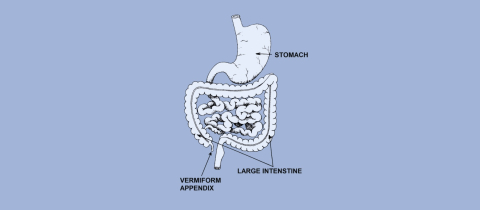I'm a year-round helmet wearer, from white-water kayaking and cycling to skiing and snowboarding. When looking for recommendations to replace my bike helmet, I found Multi-directional Impact Protection System, or “Mips,” advertised left and right. What is a Mips helmet? Why is this gear touted as the safest option and how does the technology work?
Second Skull
Humans come with built-in brain protection: the skull. This bone structure forms a protective cavity, capable of guarding the soft and spongy organ in case you hit your head on a low door frame or overhanging cabinet. However, when it comes to fast-paced activities where there is potential for impact to the head, like in sports, a helmet offers an additional layer of protection.
Responsible for overall autonomic regulation and executive function, the brain is certainly worth protecting. Impact to the head can result in a number of traumatic brain injuries (TBI), including concussion, contusion, and axonal injury (when nerve fibres are torn). TBIs are a major health concern worldwide, with an estimated annual incidence of 27 to 69 million and devastating consequences. Thankfully, a 2018 meta-analysis found that the use of bicycle helmets reduces significant head injury by 60%, TBI by 53%, and fatal/serious cycling injuries by 34%. Helmets protect the dome like a second skull.
The recipe for a helmet is simple: a hard outer shell, a shock-absorbing foam layer, a retention system (like a chin strap), and other comfort features (padding, ventilation). The gear is tested and regulated by the U.S. Consumer Product Safety Commission (CPSC), the Canadian Standards Association (CSA), Snell Foundation, or the American Society for Testing and Materials (ASTM), to ensure that established safety standards are met before hitting the market. Approved helmets are able to effectively absorb and dissipate the energy from direct impact, such as the linear force that occurs when your head hits an object, or vice versa. There’s no doubt that helmets help. But are real-life accidents confined to linear impacts?
“Born from Science”
Hans von Holst, a brain surgeon from the Karolinska Institute in Stockholm, Sweden wondered just that. In 1995, he began researching helmet construction. At the core of his research was the realization that impacts are not all linear — questioning the efficacy of all helmets in the industry at the time. The idea is that when you bike, ski, or motorcycle, and fall, you are likely to experience rotational movement upon impact. These angular/oblique forces can direct further into the brain, putting greater strain on the organ, thus resulting in more severe injuries.
With the KTH Royal Institute of Technology and the help of Peter Halldin, a PhD student in biomechanics, Holst began his journey to address this issue. But between his initial realization and the birth of Mips lie over 50 000 helmets, 300 patents, and a blueprint inspired by the human body.
Sandwiched between the brain and the skull are thin membranes called meninges, which act to safeguard the delicate neural tissue. The three layers of the meninges, from outer to inner, are the dura mater, the arachnoid mater, and the pia mater. The dura mater is a tough protective layer directly beneath the skull. The arachnoid mater, named for its spider-web-like appearance, is a thin layer of connective tissue that project to the pia mater. The innermost layer, the pia mater, acts kind of like shrink wrap: thin and tightly wrapped around the folds of the brain, allowing only blood vessels to pass through. Between the arachnoid mater and pia mater is the subarachnoid space, filled with a watery liquid called cerebrospinal fluid. Upon impact, this mid-layer allows for slight motion of the skull in every direction, preventing direct impact between brain and bone. By dissipating energy and protecting the brain, the meninges offer a built-in shock absorption system. Mips takes the careful design of the meninges and translates it into our sporting gear.

Image Source: https://my.clevelandclinic.org/health/articles/22266-meninges
Multi-directional Impact Protection System
Holst, Halldin, and their team have spent the last 25 years researching rotational motion, developing safety systems, and implementing them in helmets.
You can’t just strap a helmet onto someone’s head, crash their bike, and then assess how much brain damage they end up with. Instead, the researchers found ways to test the relationship between helmet design and brain injury in controlled settings. The Mips test lab uses the finite element (FE) model to visualize and quantify the impact of injury on each part of the brain. According to bike crash statistics, they test their helmets on model heads at a speed of 6.2m/s at an angle of 45 degrees, with a head form containing accelerometers measuring six degrees of freedom.
Mips technology works by adding a low-friction layer between the outer shell and the padding of the helmet. This layer allows the helmet to slide 10-15mm upon impact, reducing the rotational forces transmitted to the head.

Mips is an insert liner and not a helmet itself. Instead, inserts are injection moulded to fit perfectly inside existing helmet models. Between the careful fitting and lightweight design (20-45 grams), users can't even feel the addition of the plastic lining. Each new helmet model is then tested in every available size with and without the Mips system before being marked with the yellow sticker and put onto shelves. Today, Mips can be found in helmets made by 150 partner brands. This is why you can see people donning Mips-equipped gear for activities like cycling, hockey, snow sports, motorsports, horseback riding, rock climbing, and even in construction. So, there you have it, the final ingredient to the helmet recipe.
Not All Helmets Are Created Equal
Outside the Mips test centre, their systems still perform to a T. When put to the test, Mips and SPIN (a similar system by POC) provided considerable improvements in the absorption of rotational kinematics when compared to control helmets. Another study conducted at the Dyson School of Design Engineering in London, UK, looked at 27 bicycle helmets, 15 of which had Mips systems, 3 with various other rotational-dampening systems (WaveCel corrugated liner, SPIN shear padding, and Hovding 3.0’s airbag system), and the remaining were conventional controls. The researchers found that strain across the whole brain was lowered in helmets with new technologies, particularly in the corpus callosum and sulci.
The impact of Mips research is twofold. In addition to creating a product that protects heads worldwide, Mips has elevated safety standards for manufacturers and regulation agencies. So, when it comes to choosing a helmet, keep Mips and other rotational-dampening systems in mind. The Virginia Tech Helmet Ratings can act as an unbiased and helpful tool in comparing different models. Additionally, it is crucial to get a properly fitted helmet that meets the safety standards for your activity of choice. You would be very hard-headed to not wear a helmet at all.







